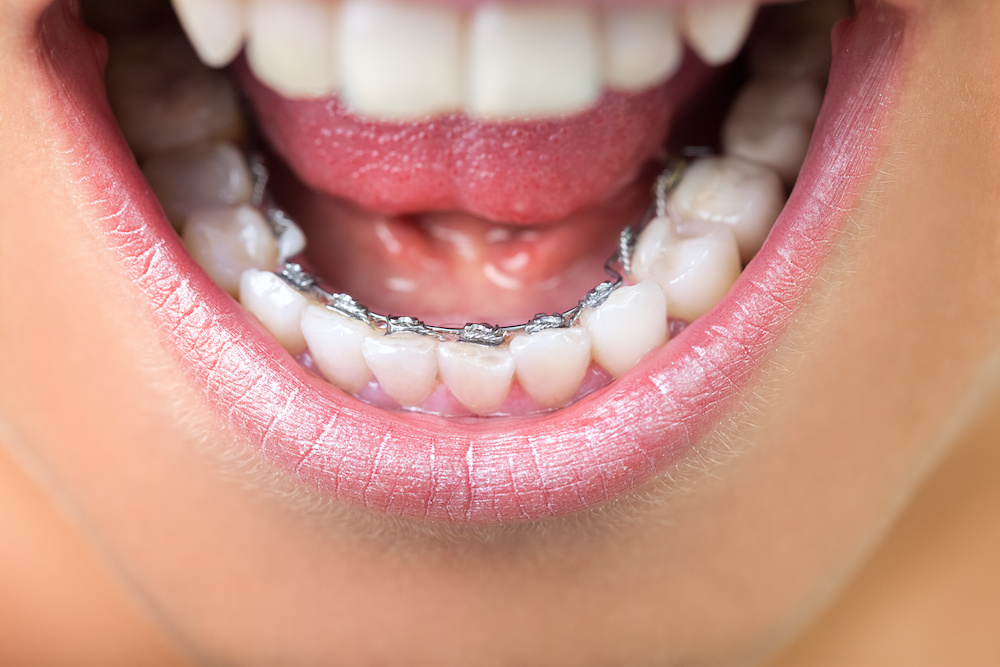Last week we explained what functional appliances and space age wire are and how they work. Another unfamiliar term you may have heard at the orthodontist is “lingual braces.” These braces get their name from their location in your mouth. The lingual area is where your tongue goes, so lingual braces are attached to the back of your teeth – where your tongue is – instead of the front.
How Do Lingual Braces Work?
Actually, braces behind your teeth work the same way as braces in front of your teeth. They are made up of metal brackets and wires and are attached to your teeth with dental cement. Every six to eight weeks, your orthodontist will adjust them to help your teeth shift into their proper positions. Because they are made with the same components as regular braces, lingual braces can fix the same types of misalignment.
Some orthodontists take dental impressions of a patient who wants lingual braces, while others, like us, use a digital scan of your teeth instead. At our office, after the scans are taken, the brackets are custom-made for your teeth, ensuring a proper fit. In about the same length of time as regular braces – 18 to 24 months – you will have the straight teeth and smile you always wanted.
What Are the Benefits to Braces Behind Your Teeth?
The most obvious benefit to having your braces attached to the back of your teeth is that they can’t be seen. This makes them a good choice for adults needing to maintain a professional appearance, teens who may be self-conscious about having braces, or brides who want straighter teeth but don’t have time to complete their treatment before the big day. Many people use Invisalign for this reason, but some people don’t have the discipline required to use the removable trays or their case may be too severe for Invisalign.
There are other benefits as well. The technology used in lingual braces eliminates the need for elastic bands, which makes them more comfortable for some patients. People who play a wind instrument may also find it easier to adjust with these braces because the brackets aren’t between the teeth and lips. And any marks that may be left on your teeth when the braces are removed would be on the back side, so they aren’t visible.
With all of these benefits, why doesn’t everyone wear lingual braces? For starters, they are more expensive than regular braces or Invisalign. They can be a little more difficult to clean because you cannot see them as well when you’re brushing and flossing. Also, some patients may find it harder to tolerate the brackets and wires between their teeth and tongue area instead of on the outside of their teeth.
The best way to determine if braces behind your teeth are right for you or your child is to meet with an orthodontist who is knowledgeable about lingual braces. Charleston Orthondontic Specialists is one of the few offices in the Charleston are to offer Harmony lingual braces from American Orthodontics. We encourage you to call our office at (843) 4-BRACES and schedule a free initial exam to discuss the many treatment options available.



